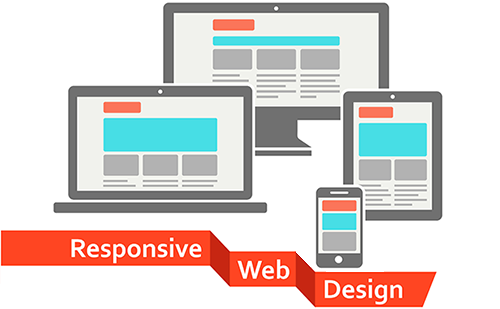Pulse of Information
Your source for the latest insights and updates.
Responsive Web Design: Why Your Site Needs a Wardrobe Change
Transform your website with responsive design! Discover why a wardrobe change is essential for digital success and user engagement.
The Key Benefits of Responsive Web Design for Your Business
Responsive web design is essential for businesses aiming to create a seamless user experience across various devices. One of the key benefits is improved user experience. When a website is responsive, it automatically adjusts to different screen sizes, ensuring that content is easily accessible and visually appealing. Google has prioritized mobile-friendly websites in its search rankings, meaning that a responsive design can also lead to better visibility and higher traffic. In fact, research shows that mobile users are more likely to engage with a site that is easy to navigate, leading to increased conversions and customer satisfaction.
Another significant advantage of responsive web design is cost efficiency. Instead of creating and maintaining separate websites for desktop and mobile users, a responsive design streamlines your online presence into a single site. This not only saves on development and maintenance costs but also ensures that all users have access to the same content, regardless of their device. Additionally, responsive sites are easier to update, allowing businesses to make quick changes without the hassle of adjusting multiple website versions. Overall, investing in responsive web design can yield remarkable returns through enhanced reach and engagement.

Is Your Website Ready for Mobile Users? Unpacking Responsive Design
In today's digital age, mobile users make up a significant portion of web traffic, which is why having a website that is ready for them is essential. Responsive design is the key solution to ensure that your site looks great and functions well on devices of all sizes, from desktops to smartphones. This approach allows your website to adapt its layout dynamically based on the screen size, offering an optimal browsing experience. Ignoring this trend can lead to missed opportunities, as potential customers may quickly leave if they encounter a non-mobile-friendly interface.
To determine if your site is truly mobile-ready, consider the following factors:
- Flexible Layout: Does your site adjust its elements appropriately?
- Fast Loading Times: Are your images and content optimized for mobile?
- Touch-Friendly Navigation: Is your menu easily clickable?
Responsive vs. Adaptive: Which Design Approach is Right for You?
When deciding between Responsive and Adaptive design, it's important to understand the core differences that can impact user experience. Responsive design utilizes flexible grids and fluid images, allowing a single layout to adjust seamlessly across various screen sizes. This approach is ideal for ensuring a consistent user experience on mobile devices, tablets, and desktops without the need for multiple versions of the same site. In contrast, Adaptive design focuses on creating distinct layouts tailored to specific screen sizes, which can provide a more optimized experience for each device, but often requires more maintenance and resources.
Ultimately, the choice between Responsive and Adaptive design depends on your specific needs. Consider the following:
- Target Audience: If your users primarily access your site from a variety of devices, Responsive design may be the best fit.
- Maintenance: If you prefer a site that requires less frequent updates, Adaptive design could be more suitable.
- Budget: Responsive design typically involves lower costs for development as it utilizes a single fluid layout.
By weighing these factors, you can determine which design approach aligns with your business goals.